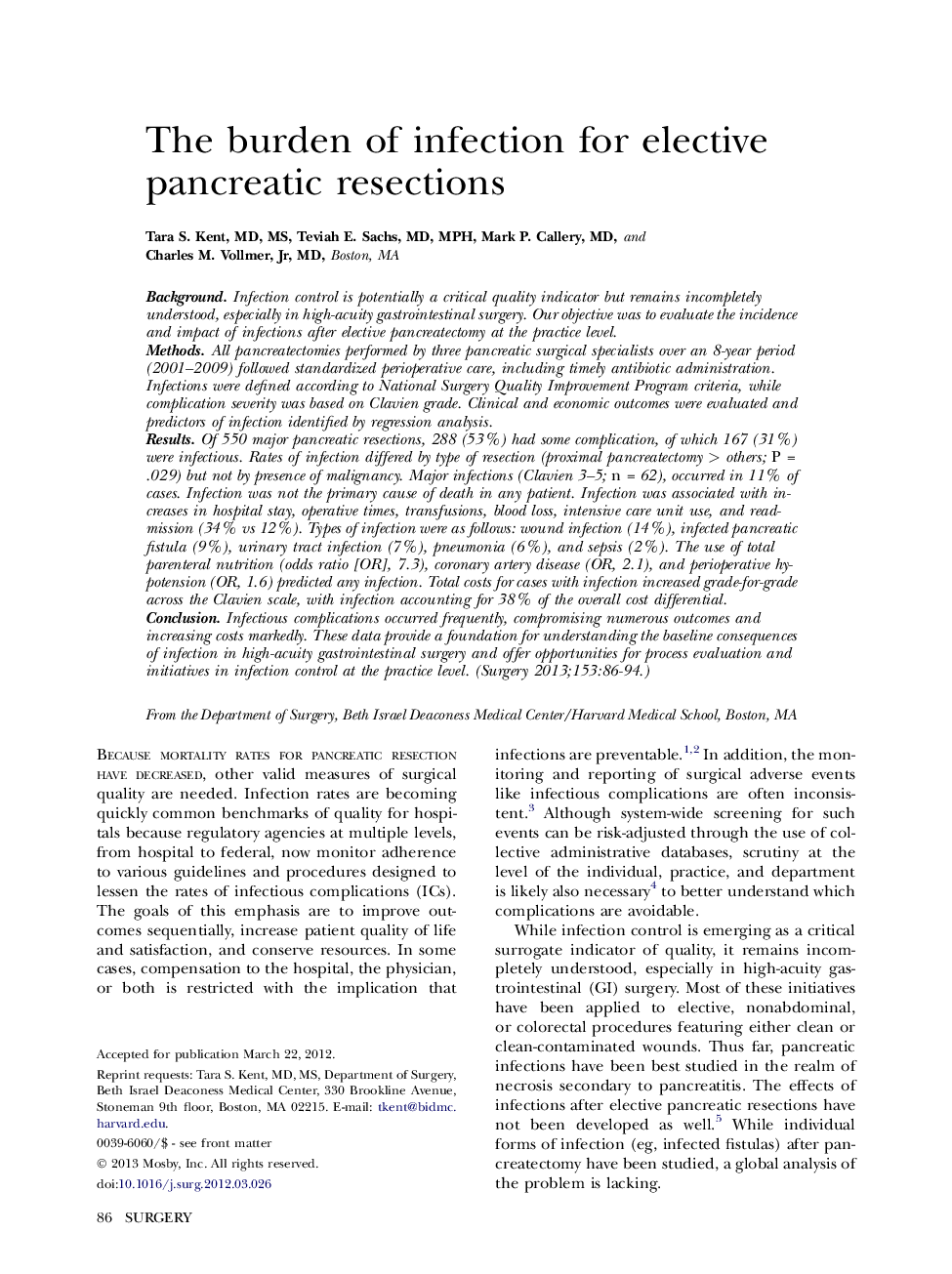| Article ID | Journal | Published Year | Pages | File Type |
|---|---|---|---|---|
| 4307692 | Surgery | 2013 | 9 Pages |
BackgroundInfection control is potentially a critical quality indicator but remains incompletely understood, especially in high-acuity gastrointestinal surgery. Our objective was to evaluate the incidence and impact of infections after elective pancreatectomy at the practice level.MethodsAll pancreatectomies performed by three pancreatic surgical specialists over an 8-year period (2001–2009) followed standardized perioperative care, including timely antibiotic administration. Infections were defined according to National Surgery Quality Improvement Program criteria, while complication severity was based on Clavien grade. Clinical and economic outcomes were evaluated and predictors of infection identified by regression analysis.ResultsOf 550 major pancreatic resections, 288 (53%) had some complication, of which 167 (31%) were infectious. Rates of infection differed by type of resection (proximal pancreatectomy > others; P = .029) but not by presence of malignancy. Major infections (Clavien 3–5; n = 62), occurred in 11% of cases. Infection was not the primary cause of death in any patient. Infection was associated with increases in hospital stay, operative times, transfusions, blood loss, intensive care unit use, and readmission (34% vs 12%). Types of infection were as follows: wound infection (14%), infected pancreatic fistula (9%), urinary tract infection (7%), pneumonia (6%), and sepsis (2%). The use of total parenteral nutrition (odds ratio [OR], 7.3), coronary artery disease (OR, 2.1), and perioperative hypotension (OR, 1.6) predicted any infection. Total costs for cases with infection increased grade-for-grade across the Clavien scale, with infection accounting for 38% of the overall cost differential.ConclusionInfectious complications occurred frequently, compromising numerous outcomes and increasing costs markedly. These data provide a foundation for understanding the baseline consequences of infection in high-acuity gastrointestinal surgery and offer opportunities for process evaluation and initiatives in infection control at the practice level.
